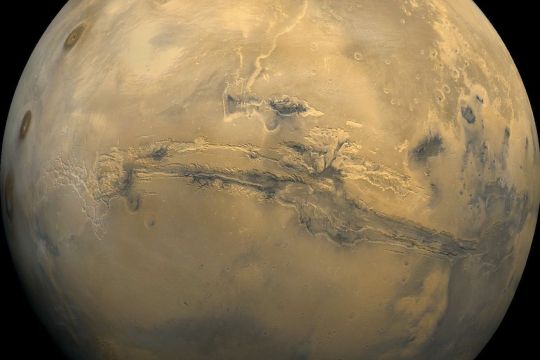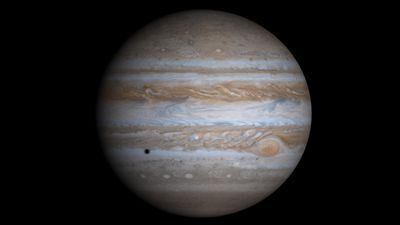#percival cleft
Explore tagged Tumblr posts
Text

Peachtober day 15: "Lamp."
"I heard of a knight once who wore the lantern of Akone embroidered on his surcoat. So great was his faith that they called him 'The Paladin.'"
#peachtober 2024#peachtober#learning to draw#drawtober#lamp#lantern#paladin#percival cleft#crudely drawn swords
0 notes
Text
Ghost Speaker

I simply think that Peecy CrudestSwords is very cool.
#character design#digital art#digital#crudely drawn swords#procreate#crudely drawn fan art#ttrpg#percival cleft#dungeon world#paladin#character illustration
6 notes
·
View notes
Text
Secret Base Reviews: Mars

The red planet? More like the DEAD planet
Mars is dead. As corpses go, it’s pretty interesting: volcanos so big they might have altered the planet’s rotation; enough atmosphere to support seasonal weather patterns; a cleft in its surface that makes the Grand Canyon look like a roadside ditch; polar ice caps; tantalizing, suggestive geological features. It’s interesting enough that humanity has spent some time and effort getting to know it.
As of this writing there is a little plutonium-powered robot scootching around on the floor of one of Mars’ craters, getting to know the planet still further. Curiosity is the latest in a line of celebrated Mars expeditions, which began with the Vikings in the 1970s and continue to be despatched, with intermittent success, up to the present day. Our robots, however, are just the vanguard. Eventually, someone will make the trip to an alien world, and it’s incomprehensible to think that their destination will be anything other than the rusty corpse that is Mars.
Why does the Red Planet have such a hold on our scientific imagination? Firstly, it’s a matter of convenience. It’s nearby and, for certain definitions of ‘easy’, easy to get to. Exploring elsewhere would be doing things out of order. But the Martian dream isn’t just about efficiency. Percival Lowell presumably wasn’t thinking about orbital mechanics when he mapped out the planet’s (wholly illusory) canals back in the 19th century.
Nor was H.G. Wells was when he wrote The War of the Worlds. He was, however, considering death, both for Mars and the hapless inhabitants of 1880s England, for whom ecological collapse on a distant planet meant invasion. The association between Mars and war and death and blood, of course, stretches back for thousands of years. Not for nothing does the name come down to us as the Roman God of War.
It is the death of desiccation that interests us now. Over the last few decades it’s become increasingly obvious that our favorite red planet was once blue. Water was everywhere on ancient Mars. What we see now is the ghost of a once dynamic world.
There’s an important distinction between ‘dead’ and ‘inert.’ You’d never say that a rock was dead (even if that rock is literally made of dead plankton!). You’d never even say Mercury was dead. Death implies life. But it turns out with Mars, the language was reasonably precise. There’s no evidence that biological life ever existed there, but everything else suggests that billions of years ago, the planet used to boast a thicker atmosphere, a water cycle, and everything we might need to call a world inhabitable. So what happened between then and now?
Mars died, and Jupiter probably killed it.
As planets go, Mars is pretty dinky. It’s about 4,200 miles across, and has a mass around 15 percent that of Earth. Now that Pluto’s been kicked out of the club, it’s the second-smallest planet in the solar system, beating out only Mercury.
It turns out that being small is detrimental to long-term survival at the planetary level. Strong magnetic fields are needed in order to fend off solar radiation from stripping the lighter elements out of a planet’s atmosphere. On Earth, that magnetic field is powered by convection in its semi-liquid iron outer core, which creates what is known as a planetary dynamo. Mars used to have a dynamo too. You’ll be shocked to hear that it died.
Low-mass planets lose heat more rapidly than bigger ones, and while Mars still has a liquid iron core it appears that it’s no longer hot enough to generate the convection required to power an appreciable magnetic field. It definitely used to have one — you can tell by magnetized rocks laid down when the planet was young — but nobody can find any evidence of an active dynamo later than about 3.7 billion years ago. Without a working dynamo and a protective magnetic field, most of Mars’s water was blasted from its atmosphere by solar radiation long ago, leaving us with a very dead world.
What’s Jupiter got to do with this? Good question!
The last few decades have been pretty exciting for planetary scientists, who finally have more solar systems to poke around in than our own. When all we had to go on was our own neighborhood, it looked pretty reasonable. Rocky planets, some asteroids, gas giants, ice giants. Nice and orderly. But when we started looking at exoplanets, it turned out that the structure of the solar system is actually pretty unusual. Where are the super-Earths? Where are the Hot Jupiters?
It’s important to understand that we’re now straying far into the realm of the hypothetical. While we have some geological evidence of the Martian dynamo, and can indeed work out that water once flowed on the surface of the Red Planet, we’re now trying to tease out mysteries from the dawn of the solar system. This is hard, and while there obviously is a right answer, it ain’t going to be signposted. I should also note that I am in no way qualified to assess these hypotheses in anything except the ‘is this interesting’ sense.
Anyway, the most interesting hypothesis, at least where Mars is concerned, is the Grand Tack. This involves Jupiter wandering across the early Solar System like an absolutely gargantuan wrecking ball. Jupiter was the first planet to form, and the most important. It masses far more than every other planet combined, and has an incredible gravitational impact on its peers. And according to the Grand Tack hypothesis, it once decided to fall into the Sun.

Universal History Archive/Universal Images Group
Noted dickhead Jupiter
Early Jupiter didn’t quite reach its destination, but it spiraled from its formation point about 3.5 AU* out to a mere 1.5 AU or so. This takes Jupiter well within the orbit of Mars, where it would have cannibalized almost all of young Mars’s building material. You can also imagine what this little jaunt would have done to the asteroid belt. The reason Jupiter turned around (i.e. tacked) and retreated to the outer reaches of the Solar System is Saturn, which ended up in an orbital resonance that slowly dragged it back out to about 5 AU. And a good thing too, because Jupiter getting any closer to Earth’s orbit would have meant I would definitely not be typing this right now.
*An Astronomical Unit is the current average distance from the Earth to the Sun.
If the Grand Tack hypothesis is correct — there are reasons it might not be, as you’d expect from this sort of research — Mars’s small size is easily explained: Jupiter ate most of it before Saturn could thrum (I always think of resonances as involving thrumming; I don’t know why) to the rescue. And so, thanks to this complicated turn of events, Mars’s dynamo faded, the atmosphere’s water was stripped by solar radiation, and the planet dried up and died.
There is another hypothesis about what happened to Mars’s dynamo, although the most recent evidence of Martian magnetism messes with the timing. Enough big impacts over short enough timescales might, in theory, be able to stop a planetary dynamo. Mars has seen its fair share of impacts, and indeed there is a period (again, at least partially hypothetical) of solar system history which took place about 4 billion years ago known as the Late Heavy Bombardment. The LHB, true to the ‘HB’, involved the inner planets getting absolutely hammered by asteroids, comets, etc., and there might have been enough big impactors there to shut down the Martian dynamo. Perhaps.
This, incidentally, would still have been Jupiter’s fault. Indications are that the LHB would have been caused when interactions with Jupiter flung Neptune out into its current orbit, which would have disrupted the bodies in the Kuiper Belt and thrown a good chunk of them at the inner solar system.
In other words, Mars might be a shitty heap of rust, but that’s probably not its fault. Blame Jupiter.
4
0 notes